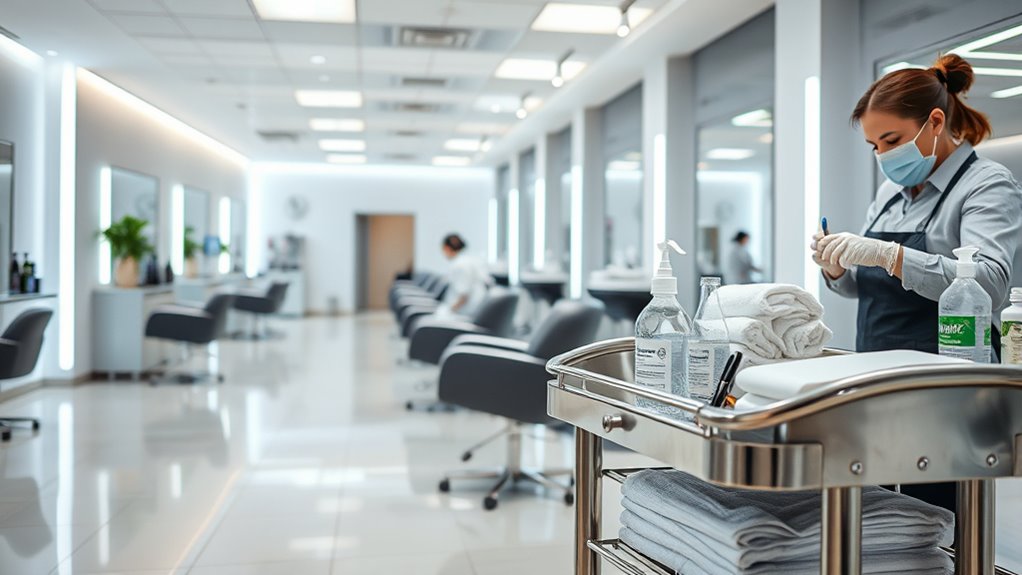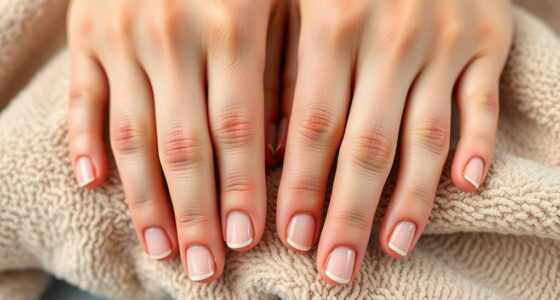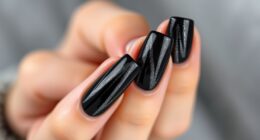To guarantee salon hygiene and safety, you should regularly sanitize tools and equipment with autoclaves or chemical sterilants, and practice thorough handwashing with PPE like gloves and masks. Keep workstations clean by disinfecting surfaces and proper waste disposal is essential—segregate waste and empty bins often. Additionally, staff training on sanitation protocols and hygiene standards keeps everyone safe. Continue exploring these essential steps to maintain a safe and professional salon environment.
Key Takeaways
- Regularly sterilize tools and equipment using autoclaves, chemical sterilants, or UV sterilizers to prevent bacterial contamination.
- Enforce strict hand hygiene and PPE use, including gloves and masks, to protect clients and staff.
- Maintain clean workstations and disinfect surfaces and shared spaces after each client.
- Properly segregate, label, and dispose of waste, especially hazardous materials, following environmental standards.
- Provide ongoing staff training on sanitation protocols and hygiene practices to ensure consistent safety measures.
Proper Sanitization of Equipment and Tools
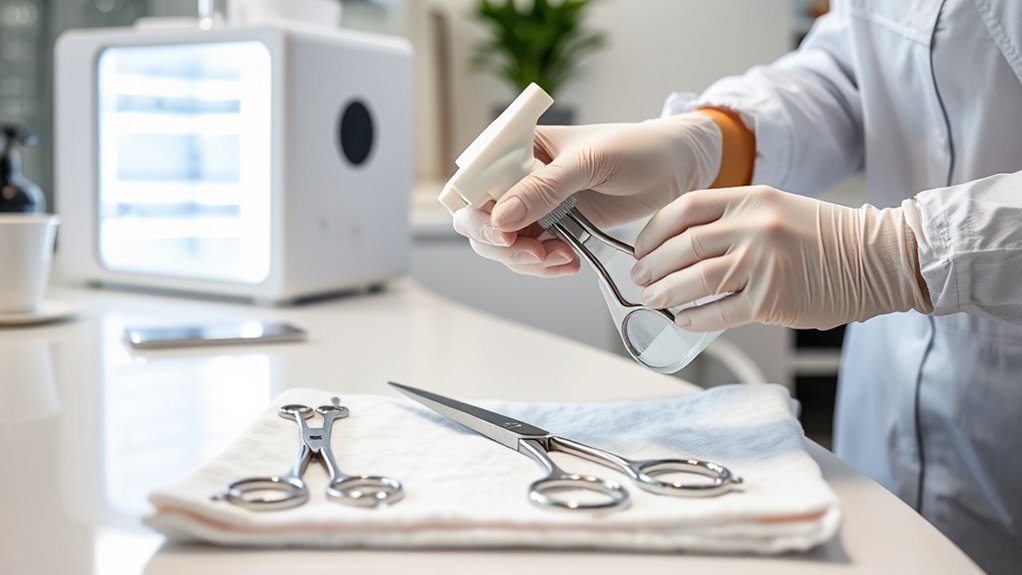
Proper sanitization of equipment and tools is essential to prevent cross-contamination and guarantee client safety. Regularly implementing effective sterilization techniques ensures that all tools are thoroughly disinfected after each use. This involves using appropriate methods such as autoclaving, chemical sterilants, or UV sterilizers, depending on the equipment. Equipment maintenance also plays a vital role; keeping tools in good condition prevents bacteria buildup and guarantees sterilization methods work effectively. Always inspect tools for damage and replace worn-out items to avoid contamination risks. Additionally, maintaining proper storage practices helps prevent recontamination of sterilized tools. Consistent cleaning and sterilization not only protect your clients but also uphold your salon’s reputation. Proper Equipment maintenance is also crucial for ensuring sterilization effectiveness and prolonging the lifespan of your tools. Remember, neglecting these steps can lead to infections, legal issues, and loss of trust. Prioritize proper sanitization to maintain a safe, hygienic environment. Additionally, understanding common causes of equipment failure can help you implement preventative measures, ensuring your tools function correctly and remain safe for use. Regular training and adherence to hygiene protocols further reinforce a safe environment for both clients and staff.
Hand Hygiene and Personal Protective Equipment
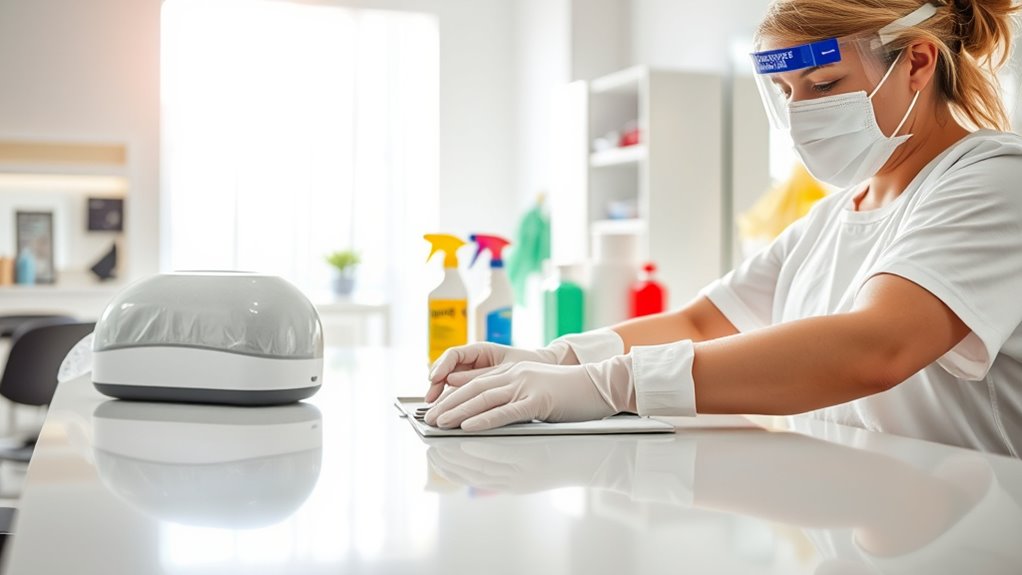
Have you ever considered how vital hand hygiene and personal protective equipment (PPE) are in preventing the spread of infections in your salon? Proper handwashing procedures are essential—wash your hands thoroughly with soap and water for at least 20 seconds before and after each client. Wearing gloves during treatments adds an extra layer of protection, especially when handling chemicals or open skin. Remember to change gloves between clients to prevent cross-contamination. Using PPE like masks and aprons also helps keep both you and your clients safe. To ensure effectiveness, regularly review best practices for hygiene and stay updated on health guidelines. Incorporating infection control measures such as proper hygiene can further enhance overall safety protocols.
Cleanliness of Workstations and Common Areas

Maintaining a clean workstation and common areas is essential for preventing infections and ensuring a safe environment in your salon. Keep your workstation organized to reduce clutter and make cleaning easier. Regularly disinfect tools, surfaces, and shared spaces to minimize microbial growth. Implement staff hygiene policies that emphasize handwashing and proper sanitation. Proper workstation organization supports these policies by preventing cross-contamination. Encourage staff to wipe down chairs, counters, and equipment after each client. Display cleaning checklists to promote consistency. Use the table below to monitor cleaning tasks:
| Area | Frequency | Responsible Person |
|---|---|---|
| Workstations | After each client | Staff |
| Common areas | Daily | Cleaning staff |
| Tools and equipment | After each use | Staff |
| Surfaces | Multiple times/day | Staff |
| Restrooms | Several times/day | Staff |
Additionally, understanding the importance of fuel injection cleaning can help maintain optimal performance and hygiene standards in the salon environment. Proper sanitation not only protects clients but also enhances the overall hygiene standards within the salon. Regular training on infection control procedures can further improve safety practices among staff.
Safe Waste Disposal Practices

To prevent health hazards and environmental contamination, you must follow safe waste disposal practices in your salon. Proper waste segregation ensures different types of waste are separated at the source, reducing risks. Use designated disposal containers for sharps, chemicals, and general waste to prevent leaks and injuries. Always label containers clearly to avoid confusion and mishandling. Regularly empty and disinfect containers to maintain hygiene. Train staff on waste segregation protocols to ensure compliance. Keep waste areas organized and away from client spaces. Avoid overfilling containers to prevent spills. Implement a routine schedule for waste disposal to stay ahead of buildup. Additionally, utilizing appropriate waste management techniques can further enhance safety and environmental responsibility. Proper waste disposal is also crucial in maintaining professional standards and ensuring compliance with health regulations. Ensuring proper disposal of hazardous waste is essential to protect both health and the environment. By following these practices, you protect your clients, staff, and the environment effectively. Maintaining cleanliness and sanitation in waste handling also minimizes the risk of contaminating other areas.
Staff Training and Hygiene Protocols
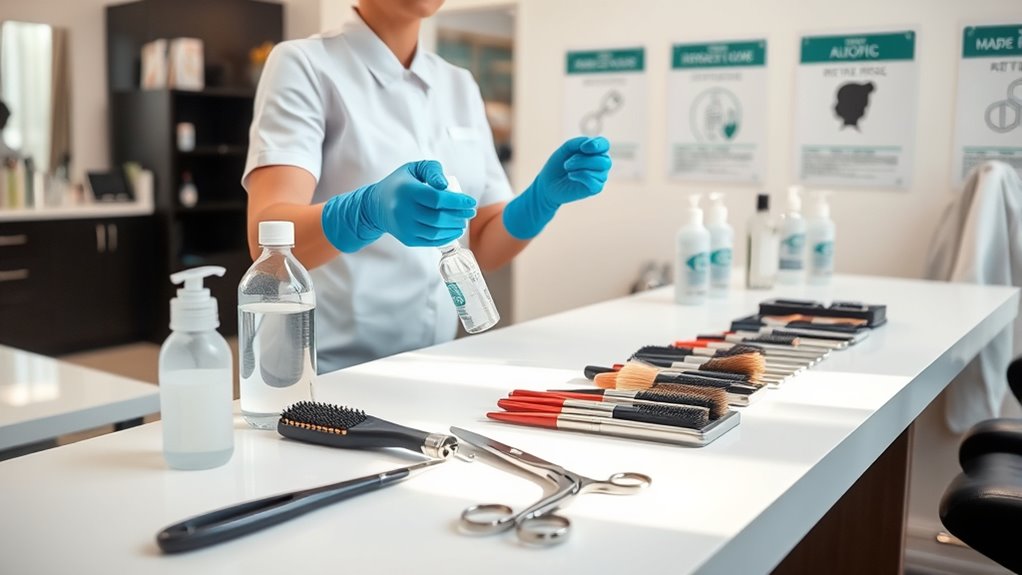
Effective staff training and strict hygiene protocols are essential for ensuring a safe and professional salon environment. You should implement extensive staff training methods that cover proper sanitation, tool sterilization, and personal hygiene practices. Regularly update your team on new safety guidelines and reinforce the importance of consistent hygiene routines. Clear customer communication is crucial; inform clients about your hygiene standards to build trust and confidence. Train staff to address customer concerns promptly and professionally, demonstrating commitment to safety. Encourage ongoing education and hands-on demonstrations to keep hygiene practices top of mind. Additionally, understanding Deaf Vibes and effective communication strategies can enhance staff interactions with clients with hearing impairments. Incorporating Design Thinking approaches can help develop innovative solutions for hygiene challenges and improve overall service quality. Conducting regular hygiene audits can also ensure compliance and highlight areas for improvement. By prioritizing thorough training and effective communication, you create a safer space for clients and foster a culture of professionalism within your salon. Furthermore, emphasizing the importance of proper tool sterilization helps prevent cross-contamination and maintains high sanitation standards.
Frequently Asked Questions
How Often Should Salon Air Filtration Systems Be Serviced?
You should service your salon air filtration systems regularly to maintain ideal air quality. Typically, it’s recommended to perform filtration maintenance every 3 to 6 months, depending on usage and local air quality conditions. Regular servicing ensures filters are clean and functioning properly, reducing airborne contaminants and allergens. Keeping up with this schedule helps create a healthier environment for both clients and staff, ensuring your salon remains safe and comfortable.
What Disinfectants Are Most Effective Against Emerging Pathogens?
Think of disinfectants as your frontline warriors, much like Sherlock Holmes solving mysteries. You need to choose those with high disinfectant efficacy to combat emerging pathogens effectively. Look for products proven to control new and evolving microbes, ensuring your tools stay safe and contamination-free. Staying updated on the latest disinfectant formulations helps you maintain a hygienic environment, protecting clients and staff alike from unseen threats.
Are There Specific Hygiene Protocols for Different Types of Beauty Treatments?
You should implement specific hygiene protocols tailored to each beauty treatment to guarantee safety and effectiveness. This includes following precise sanitization procedures for tools and surfaces, and training staff to adhere to these protocols consistently. By doing so, you minimize contamination risks and maintain high standards. Regular staff training keeps everyone updated on best practices, helping you provide a safe environment for clients and uphold your salon’s reputation.
How Can Salons Monitor Staff Compliance With Hygiene Standards?
You can guarantee staff hygiene compliance by regularly observing and supervising your team during their work. Implement clear policies and conduct routine audits to monitor staff hygiene practices consistently. Encourage open communication so staff feel comfortable reporting concerns. Use checklists for compliance monitoring, and provide ongoing training to reinforce standards. By actively overseeing these practices, you create a safer environment, ensuring everyone adheres to hygiene standards and maintains high-quality service.
What Are the Legal Penalties for Hygiene Violations in Salons?
You wonder about the legal penalties for hygiene violations, and it’s important to understand that legal enforcement varies depending on the severity of the breach. Penalty severity ranges from fines and warnings to license suspension or even criminal charges. You must prioritize compliance, as neglecting hygiene standards risks hefty penalties, damage to reputation, and loss of business. Staying informed and adhering to regulations helps you avoid legal trouble and maintain a safe, trustworthy salon environment.
Conclusion
By following these hygiene and safety tips, you keep your salon a safe, welcoming space. Proper sanitization, hand hygiene, and waste disposal are essential, and staff training guarantees everyone stays up-to-date. Remember, a clean salon is a happy salon — it pays to stay ahead of the game. When you prioritize safety, you not only protect your clients but also build trust and loyalty. Keep these practices in mind, and your salon will shine brighter than ever.
